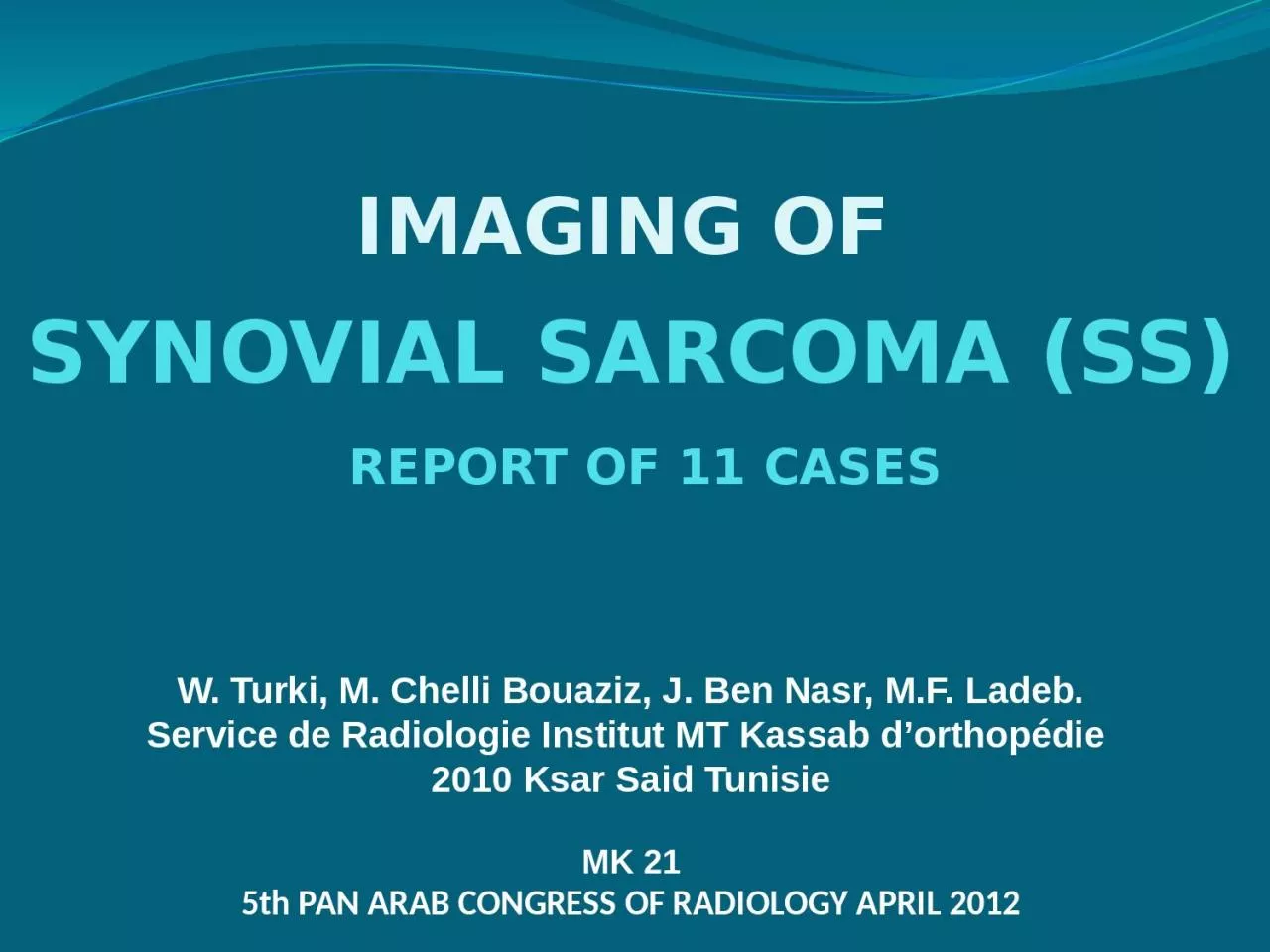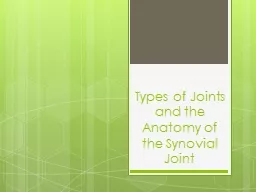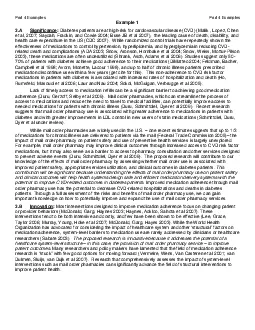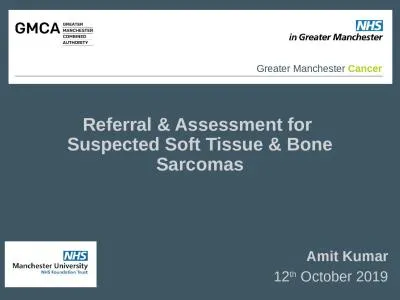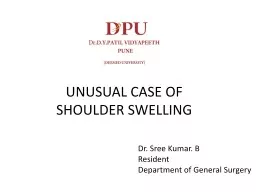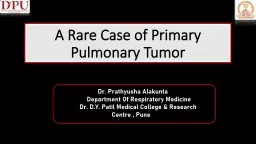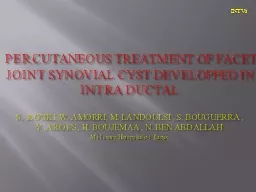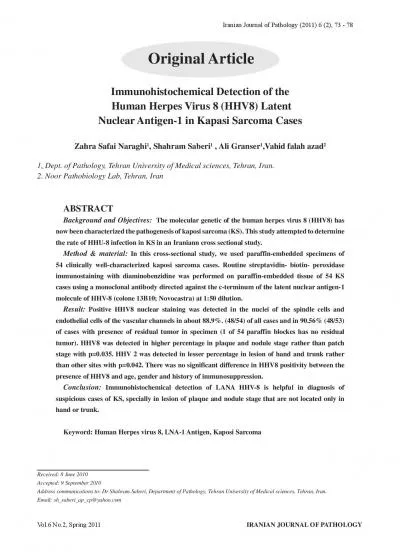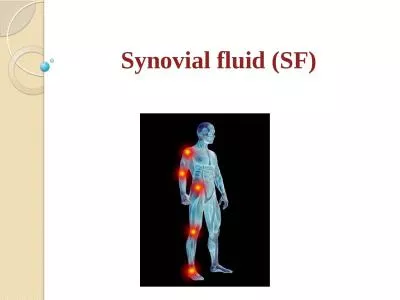PPT-SYNOVIAL SARCOMA (SS) REPORT OF 11 CASES
Author : Younggunner | Published Date : 2022-08-04
W Turki M Chelli Bouaziz J Ben Nasr MF Ladeb Service de Radiologie Institut MT Kassab dorthopédie 2010 Ksar Said Tunisie MK 21 5th PAN ARAB CONGRESS
Presentation Embed Code
Download Presentation
Download Presentation The PPT/PDF document "SYNOVIAL SARCOMA (SS) REPORT OF 11 CAS..." is the property of its rightful owner. Permission is granted to download and print the materials on this website for personal, non-commercial use only, and to display it on your personal computer provided you do not modify the materials and that you retain all copyright notices contained in the materials. By downloading content from our website, you accept the terms of this agreement.
SYNOVIAL SARCOMA (SS) REPORT OF 11 CASES: Transcript
Download Rules Of Document
"SYNOVIAL SARCOMA (SS) REPORT OF 11 CASES"The content belongs to its owner. You may download and print it for personal use, without modification, and keep all copyright notices. By downloading, you agree to these terms.
Related Documents

